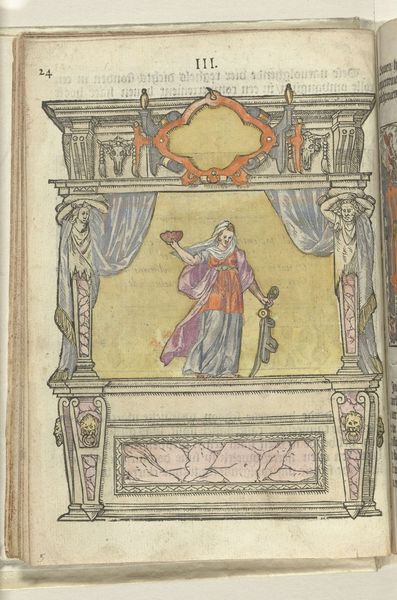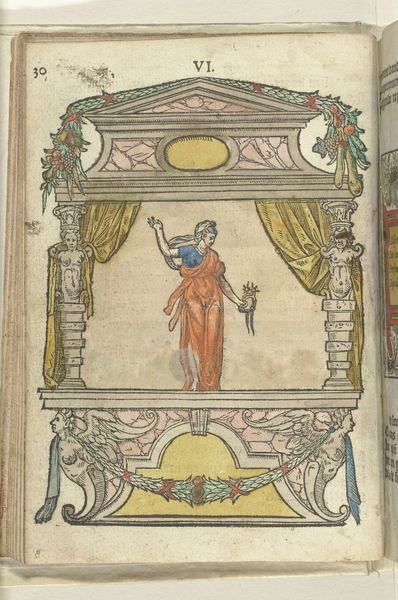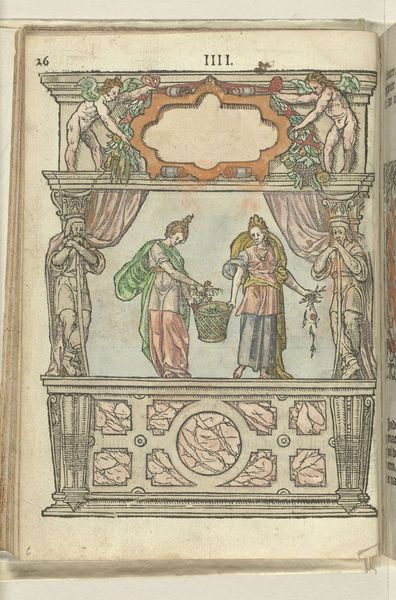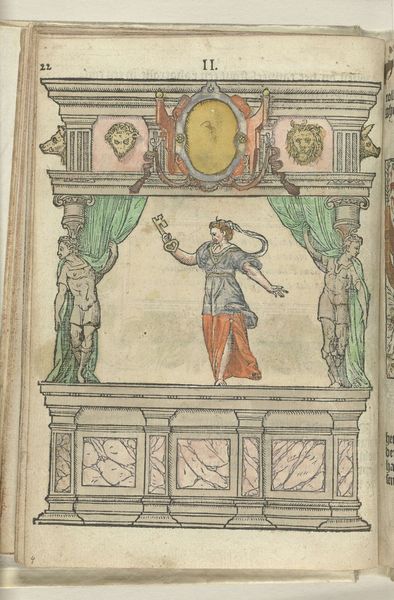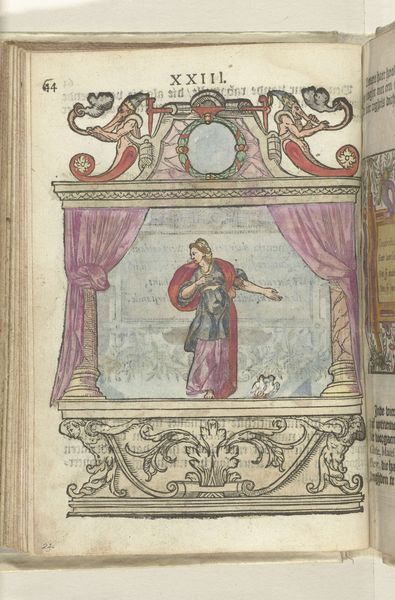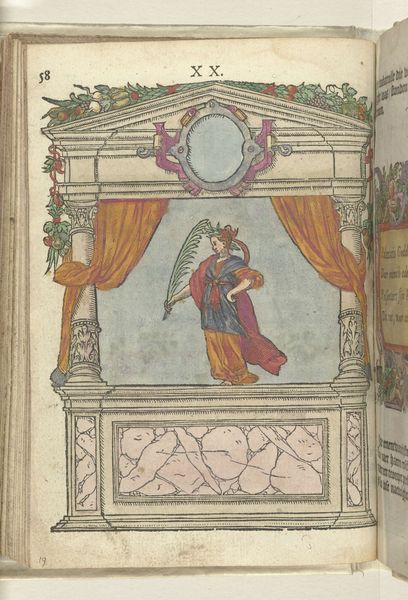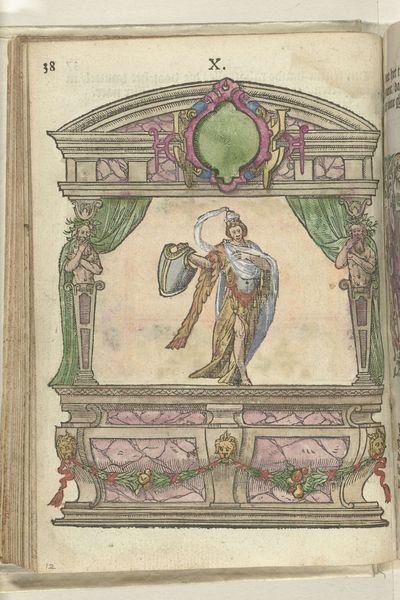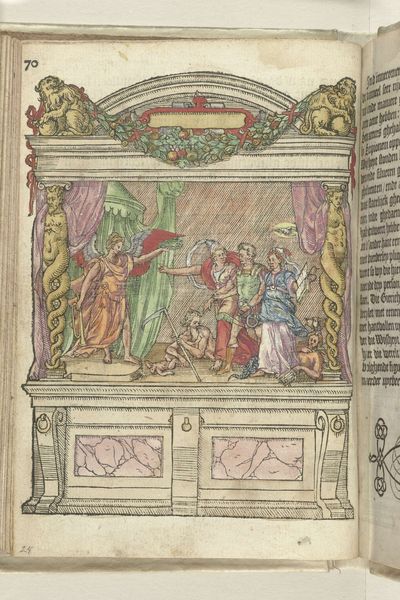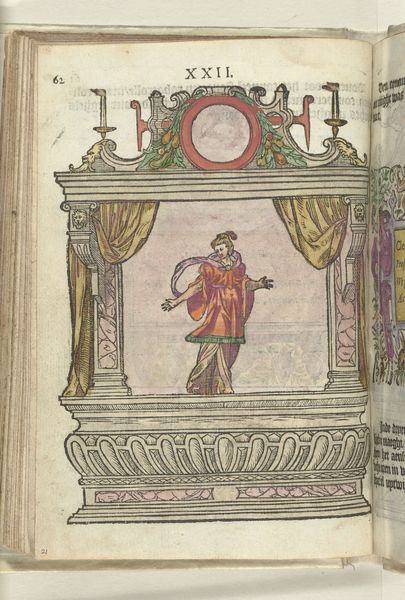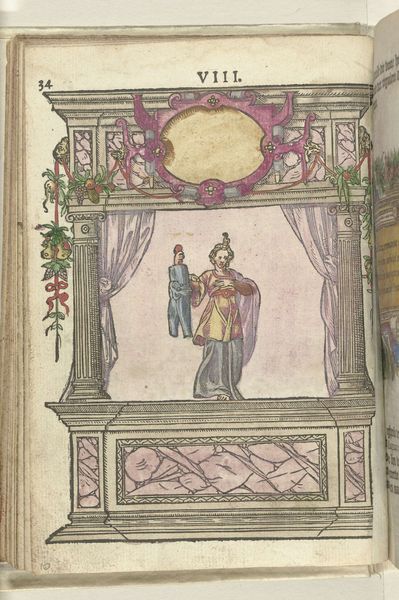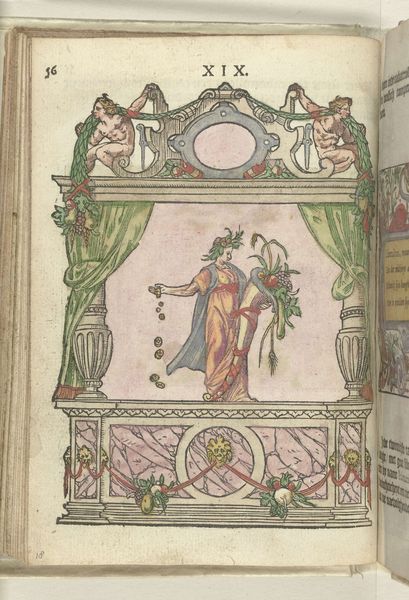
print, engraving
#
portrait
#
allegory
# print
#
mannerism
#
figuration
#
11_renaissance
#
coloured pencil
#
history-painting
#
engraving
Dimensions: height 155 mm, width 115 mm
Copyright: Rijks Museum: Open Domain
Editor: This is Antoni van Leest’s "Toneel met personificatie van de Waarheid," an engraving from around 1578. The scene seems very staged, with classical figures flanking what I assume is "Truth" holding a mirror and a snake. How do you interpret this work? Curator: Well, looking at it through a critical lens, we can consider how Van Leest uses allegory during the late Renaissance to engage with the era's political and social anxieties. Truth here isn't just some abstract concept; it's a staged performance, actively constructed within a specific power dynamic. Editor: Power dynamic? Can you explain what you mean? Curator: Certainly. Consider the historical context: The late Renaissance was a time of religious and political upheaval. Images like this weren't just about representing ideals, they were about controlling narratives. Who gets to define "truth," and for what purpose? Is she revealing something or obscuring it? Editor: So, the “Truth” is curated? I see how the mirror becomes an active choice, a manipulation almost, not just a reflection of reality. Curator: Exactly! And that act of staging – placing "Truth" between classical figures, framing her like an actress – implies a deliberate construction of meaning. This Mannerist approach draws attention to artifice and performance, questioning the stability of knowledge itself. It encourages a dialogue around what truth *means* rather than simply presenting it as self-evident. Notice also the architectural framework and how the figures interact with it. How do those details further contribute to the constructed nature of truth within the image? Editor: It's like Truth is on display, meant to be consumed by a specific audience. I didn’t think about the staging as a political commentary before. It makes the print feel much more relevant to today’s struggles with misinformation. Curator: Precisely. This work allows us to question how truth continues to be presented and manipulated even today. It reveals that the "Truth" isn't just something to be passively received, but something we must actively investigate and critique.
Comments
No comments
Be the first to comment and join the conversation on the ultimate creative platform.
